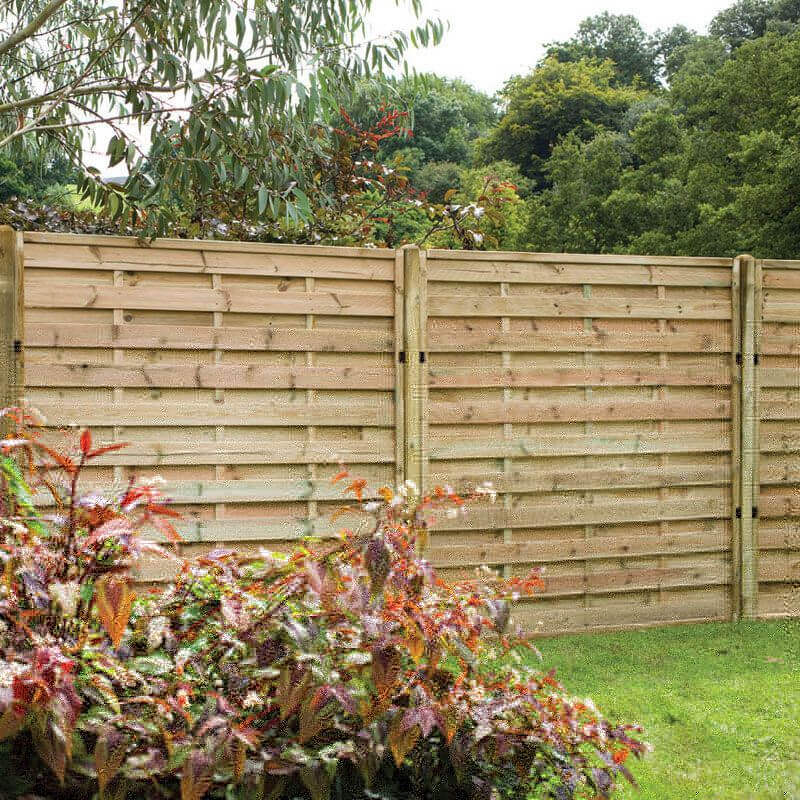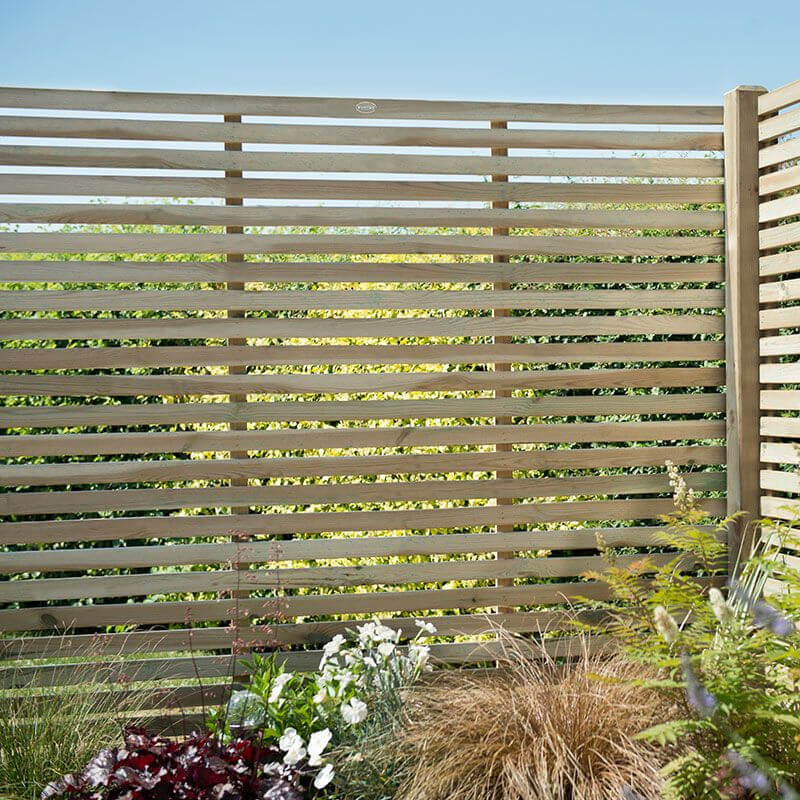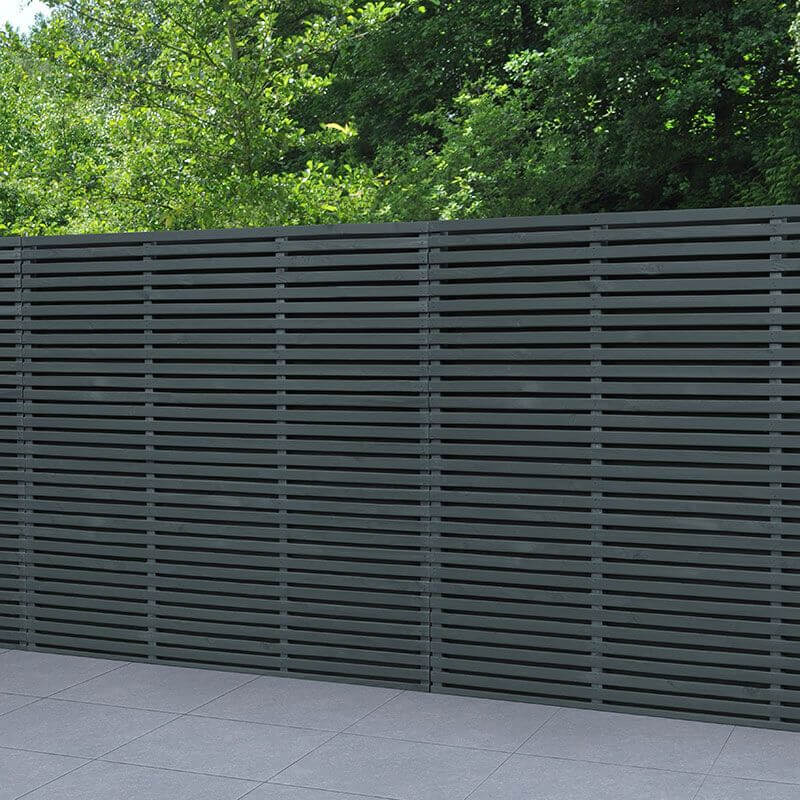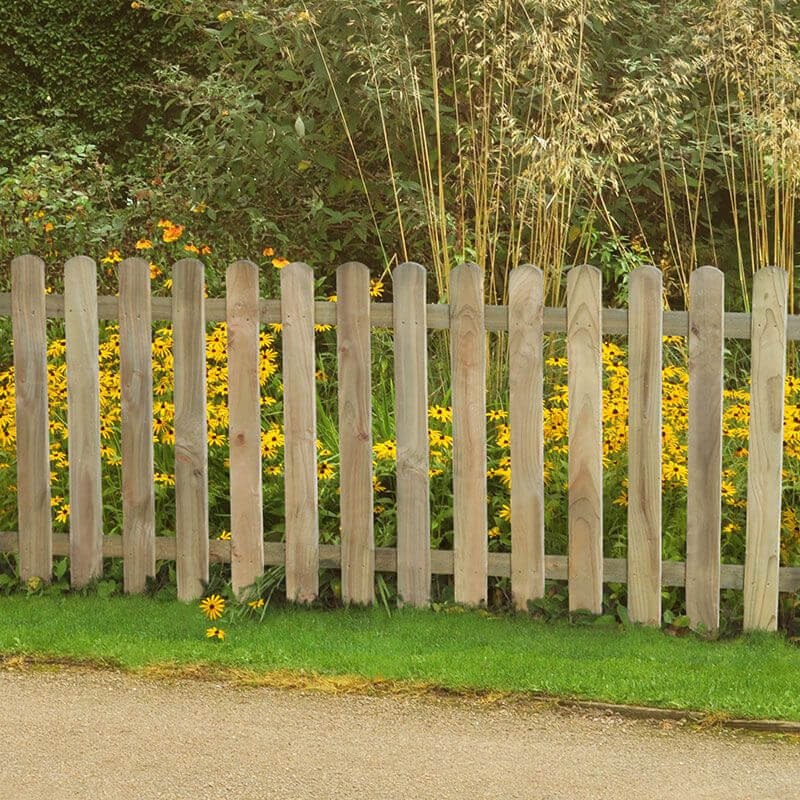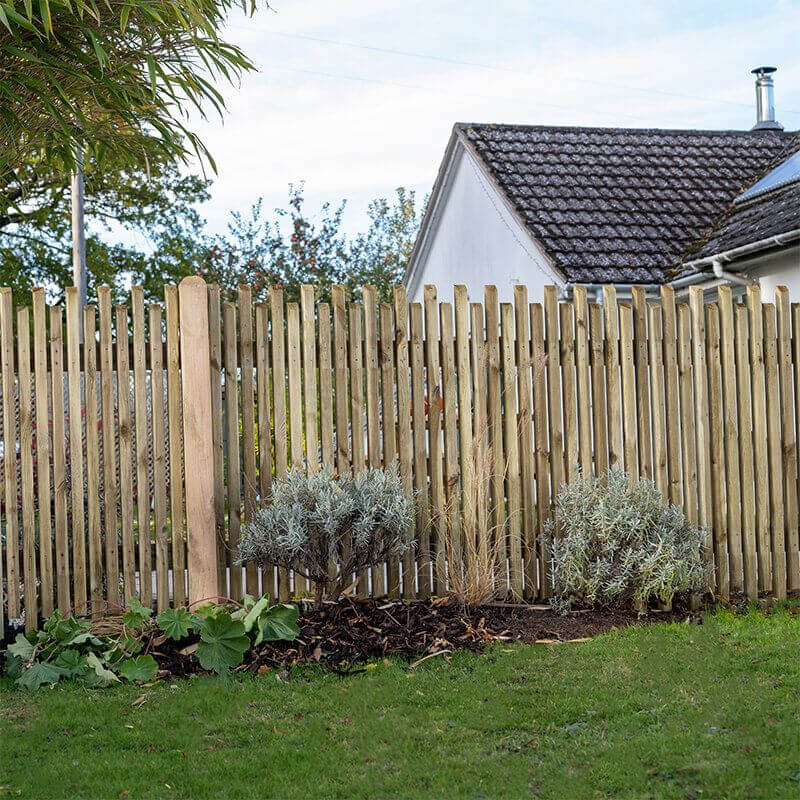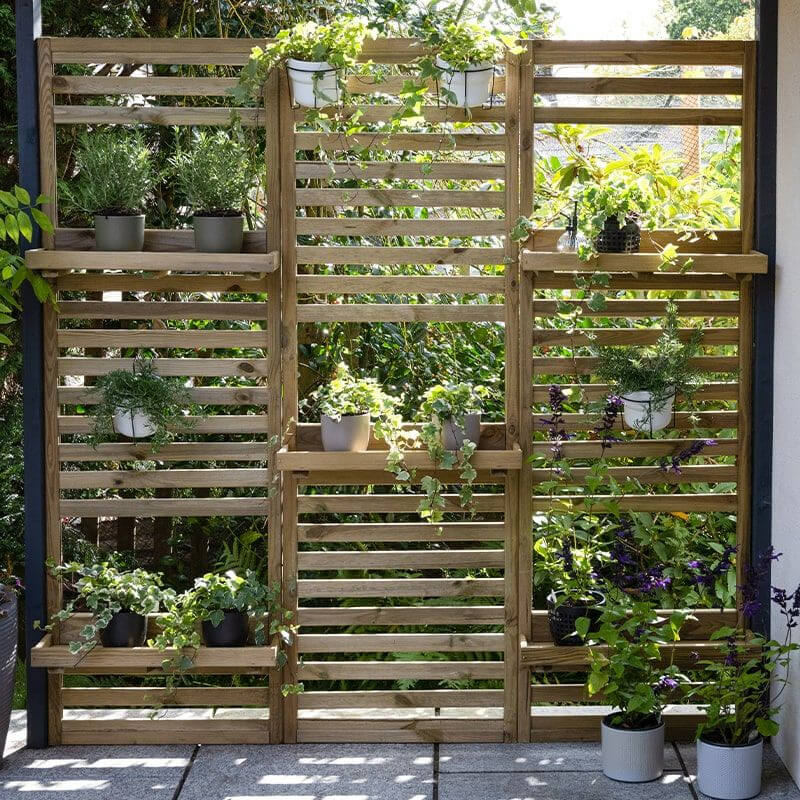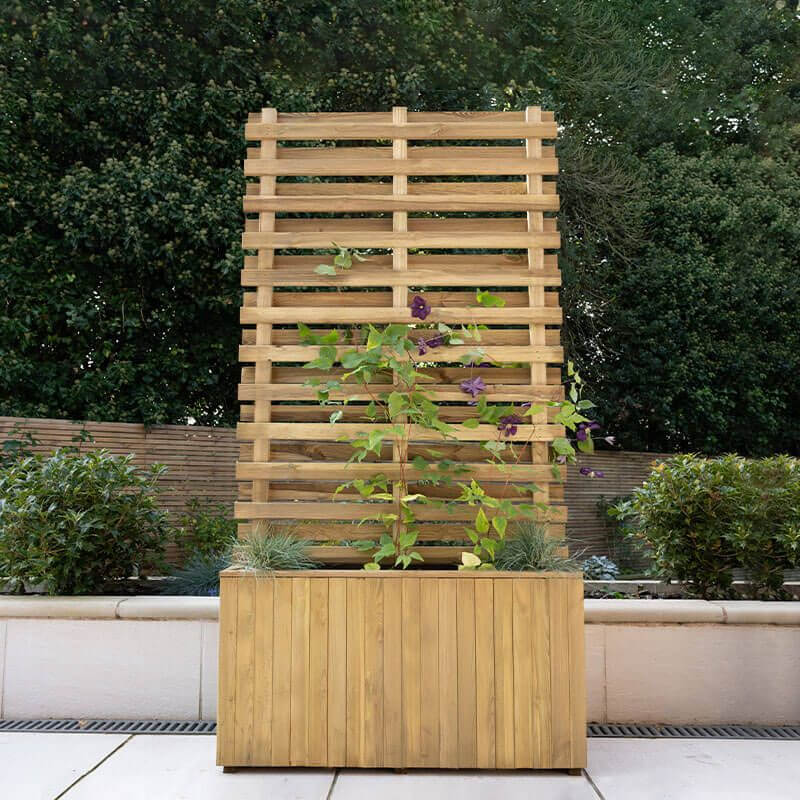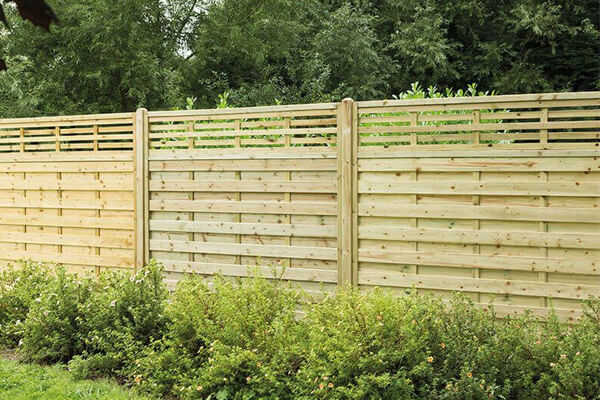
Whether it be for a garden, patio or decking area, fencing normally serves some purpose: to restrict movement or access; and often to provide privacy. To this end fencing is erected to keep animals – sometimes also children - out of a specific area. Depending on its purpose the fence will be made from posts of timber, metal pieces, concrete, or stone. But stylish fencing serves much more than purpose, it is a fashion statement and an extension of your garden décor. Read on as we inspire you with our creative patio and garden fencing ideas.
Editor’s Note [03.07.2024]:
Our article about garden fencing ideas was originally published on January 23, 2015. Today we have provided updates throughout the article. New sections added are an introduction to garden fencing and screening, unique garden screening solutions, tips for installing garden fences and screens, related articles, and a conclusion.
Introduction to Garden Fencing and Screening
Fencing and garden screening lets you create your own personal haven instead of just drawing borders. Whether you seek protection, privacy, new focal points, or a splash of colour adding garden fencing and screening will give you options in your outdoor space.
Garden fencing
This is an alternative to walls or hedges but similarly defines a garden area and provides the skeletal boundaries. Fences are great for a clearly defined boundary with no ambiguities and with many styles available they can match any homeowner’s décor aspirations. With fence panel heights between 3’ and 6’ (from us and most retailers), privacy is guaranteed too.
Garden screening
Screens tend to be more subdued and subtle. They are often used where partitioning is preferred to a solid boundary, use these for a greater degree of openness in the garden. They offer a degree of privacy and seclusion without the perceived fortress-like qualities of garden fencing.
Contrasting fencing vs screening
Which is best? Well, there is no one correct answer. Which works best will depend on the precise requirements for a particular garden, with the local climate, garden size and maintenance being important considerations.
In the home, fencing can be compared to curtains, whereas screening can be compared to blinds. It is commonplace to use both in a home and the same is true for gardens.
Often fencing is used to create an external boundary, whereas screening is used more for partitioning the garden interior, e.g. a BBQ area, children’s play area, etc. There are hybrid options though with picket and slatted fencing being see-through and possibly being used as an alternative to screening.
Creative Garden Fencing Ideas for Your Home
In many cases fencing is erected simply because it is practical to do so, e.g. to keep big farm animals like horses and cows out of a certain camp/meadow and any aesthetic considerations will not impact on how the fence looks. However, very often the fence forms part of a garden area and care is taken to make it look inviting and attractive. This is often true for smaller gardens in suburban areas or even in high-rise apartment complexes where the only garden is a balcony. Read on for inspiration and some creative patio fence ideas.
Different Styles
Some inspiring garden fencing ideas, especially. in areas with limited garden space (e.g., patio fence ideas), include:
- Patterns - experiment with patterns, which do not fit the ‘traditional’ description. Try curved fences or lattice fencing as fence decoration ideas
- Pot plants - placing these on top of your fence makes a huge difference to how attractive your garden looks. If the structure allows for it, you will simply place the pots on top of the fencing; otherwise, attach them with brackets. It is recommended to use plants with bright blooms on top of, say, a white fence and more subdued colours if your fencing is painted bright. Another idea is to use the fencing for hanging small container plants, which you attach with brackets at various intervals, thereby covering as much of the fencing as you want. Again: This will look better against a white background
- Support for climbing plants- also, a fence does not only have to separate or divide, but it can also provide the perfect spot for climbing plants and creepers, thereby affording you a tall privacy fence, if that is what you want; and a lush green to feast your eyes on
- Use of colour - a variety of styles from stark, no-fuss fencing in white to more ‘dramatic’ looks with a greater emphasis on colour
Fence Decoration Ideas
Some clever fencing ideas (apart from the obvious practical benefits of separating/dividing) may contribute to a feel of ‘adventure’ and may serve as an example of creative output. It is also a fun way of getting your children involved. Some fence decoration ideas include DIY projects such as erecting a wooden fence with patterns/faces/characters carved out of the wood or painting some nature scenes on a white background; even painting the slats of your fence in different bright colours. This kind of fencing may not be everybody’s idea, but it works well for the relaxed family with young children.
Traditional VS. Modern
We all know the ‘traditional’ picket fence, (especially painted white picket fence) and often representing the known, maybe even conservative values of those living behind it. If regular maintenance ensures a good coat of paint, when necessary, then picket fences are still an example of great garden fencing.
However, the more modern among us may go for something a bit more 'daring' like a metal fence which finds its inspiration in stark features and the industrial age. More contemporary than wood, it negates any superfluous influences and looks best when bare – no plants or foliage.
The Vegetable Garden: Something Different
Most of us grow vegetables and herbs in small areas for the sheer joy of doing so – and of course to use the produce in our kitchens without paying much attention to the garden fencing around our patch. Where you have, for instance, a patch with different veggies like carrots, beetroot, lettuce and other salad greens, peppers and whatever takes your fancy, why not try something very different to break away from the traditional? Here is a novel idea to make the fencing around your veggie garden look interesting by simply coming up with something ‘unusual’:
Take bamboo reeds and cut them into pieces long enough to create clever ‘borders’ around every separate area (keep carrots separate from beetroot and so on) on all 4 sides, and repeat upwards, maybe 4 layers (with 6 or 8 inch intervals between layers) until you have a proper ‘boxed-in’ feel for every separate area (where necessary, provide upright support pieces and simply tie the bamboo pieces together with string). Now, instead of one ordinary looking fenced in area, you will have a few; you still have the same patch, but different little ‘compartments’ to separate the different veggies. But wait: You can do even more!
If you opt for veggies that grow upward, like beans or tomatoes, use left-over bamboo pieces and plant them in between some other veggies (such as the lettuces or carrots) and lead your beans up. You will have an interesting garden fence: practical and not ‘ordinary’.
Another idea to round the veggie patch off: If you can get hold of pine needles, scatter them around the fencing - it helps keep weeds out and moisture in. The result is a veggie patch fenced off as it was before, with additional fencing created inside the bigger patch.
Be Inspired All Over Again
Old garden fencing can so easily distract from what should be every homeowner’s pleasure – the beauty and tranquillity that the garden and its immediate surroundings offer. Maybe it is time to try something else, be it a new fence inspired by a creative design, or simply sprucing up existing, tired structures. Let renewed inspiration for the perfect garden start with the perfect garden fence.
Check out our range of garden fencing and see if anything catches your attention.
Unique Garden Screening Ideas
We have put our thinking cap on and below list some unique garden screening ideas that your garden will love. These ideas also often feature recycling, upcycling, and eco-friendly ideas, so many are great for the planet as well. Try one or more of these garden screening ideas to add flair and personality to your outdoor space:
Bamboo screen
We mentioned bamboo fence earlier and there is no apology coming for mentioning them again! Bamboo looks beautiful as a screen and is highly durable, cost-effective and creates a tranquil partition in any outdoor environment.
Curtain call
Use outdoor weather-resistant curtains to make your own custom curtain screen. These are ideal for a romantic area or partitioning off as a reading area, or maybe place a drinks table and chairs behind – the choice of outdoor furniture you add is yours!
Glass bottle screen
Make a sparkly shiny screen from colourful glass bottles. Be surprised with the results as the screen changes by the hour on sunny days as light refractions beautifully shimmer around your garden.
Living walls
Yes, you can have walls, which are alive though living walls, a form of vertical gardening, which often work in conjunction with a trellis fence. Popular on balconies and patios, living walls maximise your space, change with the seasons and are useful as fence decoration ideas, which provide a little privacy.
Metal panel screens
These are forms of sculptures that dazzle in the sunlight. Blending in perfectly with contemporary décor schemes you can choose metal panel screens. Which reflect your style and personality.
Recycled doors and shutters
Do not take old doors and shutters to the tip without considering repurposing them as a quirky upcycled door/window screen. This gives a new purpose and life to what would otherwise be discarded items.
Upcycled pallet screen
Wooden pallets can easily be upcycled into stylish and chic garden screens. Ticking eco-friendly boxes too, you will love upcycled pallet screens almost as much as the climbing plants, and birds, butterflies, and pollinators will love them too!
Woven screen
You may never have heard of these, but they are worthy of investigation. Made from materials such as willow or hazel, woven screens also bring out your handcrafting skills. Create your own art statement with a natural fence, an organic woven screen that visitors will love.


Tips for Installing Garden Fences and Screens
Would you like to put screens and fences in your garden? Give us a chance to aid you with knowledgeable support that will guarantee the procedure goes well. This is all the information you require regarding the installation of garden fences and storms:
- Choose quality fencing material – naturally, you will want to choose visually appealing materials but ones that are also exceptionally durable. Whether you opt for sturdy wood or chic metal, quality is of paramount importance
- Consider access – remember to consider gates or openings. You will need easy access to the garden for both people as well as garden machinery
- Correct tools – before you start make sure you have the right tools for the job. Ensure you have a sturdy drill, saw, level, hammer, etc., View a complete list of tools needed in our blog article – “How to erect a fence”
- Digging right - when installing posts, dig deep, it is worth the effort! Aim for about a third of the post's height to be underground. This gives solid stability and protection in high winds and storms
- Finishing touches - once it is up, add a lick of paint or wood stain. It is not just protective; it is your chance to add a personal touch
- Helping hand – do not shy away from asking for help. A second pair of hands can make aligning and fixing so much easier
- Level it up - use a spirit level to ensure everything is straight and level. Wonky fences or screens are a no-go
- Measure and mark - use a tape measure and chalk or a pencil to mark where everything will go. Precision is key for a professional look
- Plan your design - before you start, have a clear garden design in mind. Sketch it out, measure twice, and get a feel for what will look best in your space
- Soil check - know your soil type. It affects how deep your posts should be and the kind of support they will need
- Supplies and fixings - stock up on all the necessary supplies like screws, nails, and brackets. You do not want to be halfway through and realise you are short on fixings
- Treatment - treat your wooden fence panels and posts with a preservative. It extends their life and keeps rot at bay
With these tips, you are all set to tackle that garden fencing or screening project. Remember, a little planning goes a long way, and there is nothing like the satisfaction of stepping back to admire your handiwork.
Related articles
For more guidance on garden fence ideas and similar subjects, we recommend reading these articles on the Buy Fencing Direct blog:
- Fifteen upcycle ideas for your garden
- Best garden fencing ideas
- Designing a garden on a budget
- Fencing ideas for your front garden
- Simple garden ideas
- The best garden trellis fencing ideas
You might also get inspired if you read articles within the garden design category of our blog!
Conclusion
Garden fencing and screening are not just about dividing spaces; they enable you to create your own little paradise. Whether it is a solid fence for tight security or a breezy screen for a bit of mystery without going full fortification, the choice is yours.
If you are all about making a statement, there is a whole world of creative garden screening ideas, and patio fence ideas including eco-friendly bamboo screens to artistic metal panels. So, why stick to the ordinary? Explore the extraordinary and give your garden a serious fence style upgrade. With a little creativity and some handy tips, you are all set to transform your garden into the envy of the neighbourhood.
Contacting Buy Fencing Direct
Well, hopefully, this blog article will have provided plenty of garden fence ideas and inspiration. If you need advice about fencing products and supplies to select from our range our friendly customer service team are easy to contact.
Contact Buy Fencing Direct using these methods:
- Phone calls - 0333 003 0515
- Emails – use our structured contact form to send us emails
- Text chat – message us using our live chat app, which provides text chat in real-time





